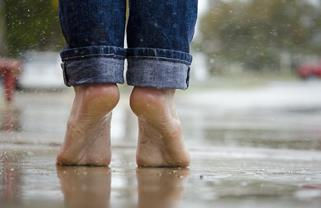The Joys of Safe Sun
- Chin Ling
- May 21, 2015
- 4 min read
Updated: Dec 7, 2022
When I was a teenager, I would sit out in the sun in the hope of curing my acne. It wasn’t until years later I was taught the hard lesson that in Eastern culture, fair skin was associated with beauty while dark skin was associated with ... well, working out in the fields probably. Perhaps the latest news can justify to me that my sun lounging days were to my benefit.
NICE (National Institute for Health and Care Excellence) is about to announce that, contrary to previous advice by cancer and health organisations, sun exposure is indeed, good for you. Well, moderate amounts anyway. So why the U-turn? It all boils down to 3 words: vitamin D deficiency.

Apart from the physiological benefit of making you feel good, sunlight also plays a vital physical element. It causes vitamin D to be made in the liver then activated in the kidneys, colon, breast and prostate. Dr Des Fernandes, founder of Environ skincare, has been recommending moderate sun exposure for years and finally his advice is being supported. He says it takes only a few minutes a day to generate enough vitamin D, then 20 minutes to convert pre-vitamin D to active D. After that you should protect yourself.
We can supplement with vitamin D but exposing ourselves to sunlight is the best way to produce it. Our bodies are self-regulating so they cannot produce toxic levels, they shut off this production whereas supplements may have to be controlled to avoid toxicity. Vitamin D helps our bodies to absorb calcium. Without it, eating calcium-rich foods or taking calcium supplements will not guarantee you healthy bones. Vitamin D maintains normal cell production, hormonal balance and boosts your immunity. There have also been links between vitamin D deficiency and obesity, insulin resistance, heart disease and some cancers.
It is the fear of skin cancer and premature skin ageing that have many of us running to buy a high and an ever higher factor suncream or sunblock whereas skin experts such as Jan Marini and Dr Des Fernandes have advocated low to moderate SPFs. As everyone’s vitamin D needs are individual, experts can only recommend how long to stay out in the sun. The rest is down to knowing our bodies’ response. If you feel yourself start to burn, your skin goes pink or red, this is your body’s blood vessels dilating and should be taken as a warning signal. How red your skin goes (called erythema) is a good indication of how much damage you’ve had from the sun. The same applying to a lesser extent with tanning.
Tanning is your skin's way of saying "I'm under attack"!
The skin produces melanin, the brown pigment to defend cells from sun damage so it should also be taken as an initial warning because your skin starts to feel the need to protect itself. This is why you should aim to develop a tan gradually in short bursts.
Most photo-damage or sun damage to the skin, a major cause of premature ageing, is actually as a result of UVA rays which penetrate cloud all year round which is why sun care is necessary all year.
UVB rays are the ones that burn the skin and are the most important for stimulating vitamin D. Most suncreams only give you protection from UVB rays, but not from UVA, so if you want to protect your face from premature photo-ageing, you need a cream that will do both. Anything higher than SPF15 and certainly sunblocks interfere with the body’s vitamin D production.

Research from University of Illinois has shown that vitamins A, C and E added to a suncream give you more effective protection from UV than just the suncream ingredients alone. Moreover, the vitamins are absorbed into the skin and cannot be removed with water.
What about exposure between 11am-3pm when the sun is at its highest? As long as you ‘watch’ your body’s warning signals, it is safe to go out for a few minutes, even without suncream. This is because the UV rays at this time are different from those at the beginning and end of the day. Furthermore, depending on where in the world you live and your skin type, you may need to take advantage of a vitamin D top-up. We could be talking 5 minutes for some people and 20 minutes for others. Little and often is the advice.
If you’re still not convinced, vitamin D deficiency takes a long time to be corrected, with controlled vitamin D supplementation and sun exposure. Pregnant women need vitamin D for themselves and their unborn child. You don’t make vitamin D sitting in a glass office or car as the UVB rays don’t penetrate glass. If you’re hoping your mineral make-up gives sun protection, check. Unless it states it, assume the opposite. If you’re concerned about the sun causing ageing, protect your face and expose other parts of yourself instead.
Lastly, when you go on holiday, pack some strong anti-oxidants. Some reputable companies have introduced supplements which offer protection from the sun from the inside so your skin is strengthened against sun damage.
Viridian S.P.F. Skin Pro-Factors
Advanced Nutrition Programme Skin Defender




Comments